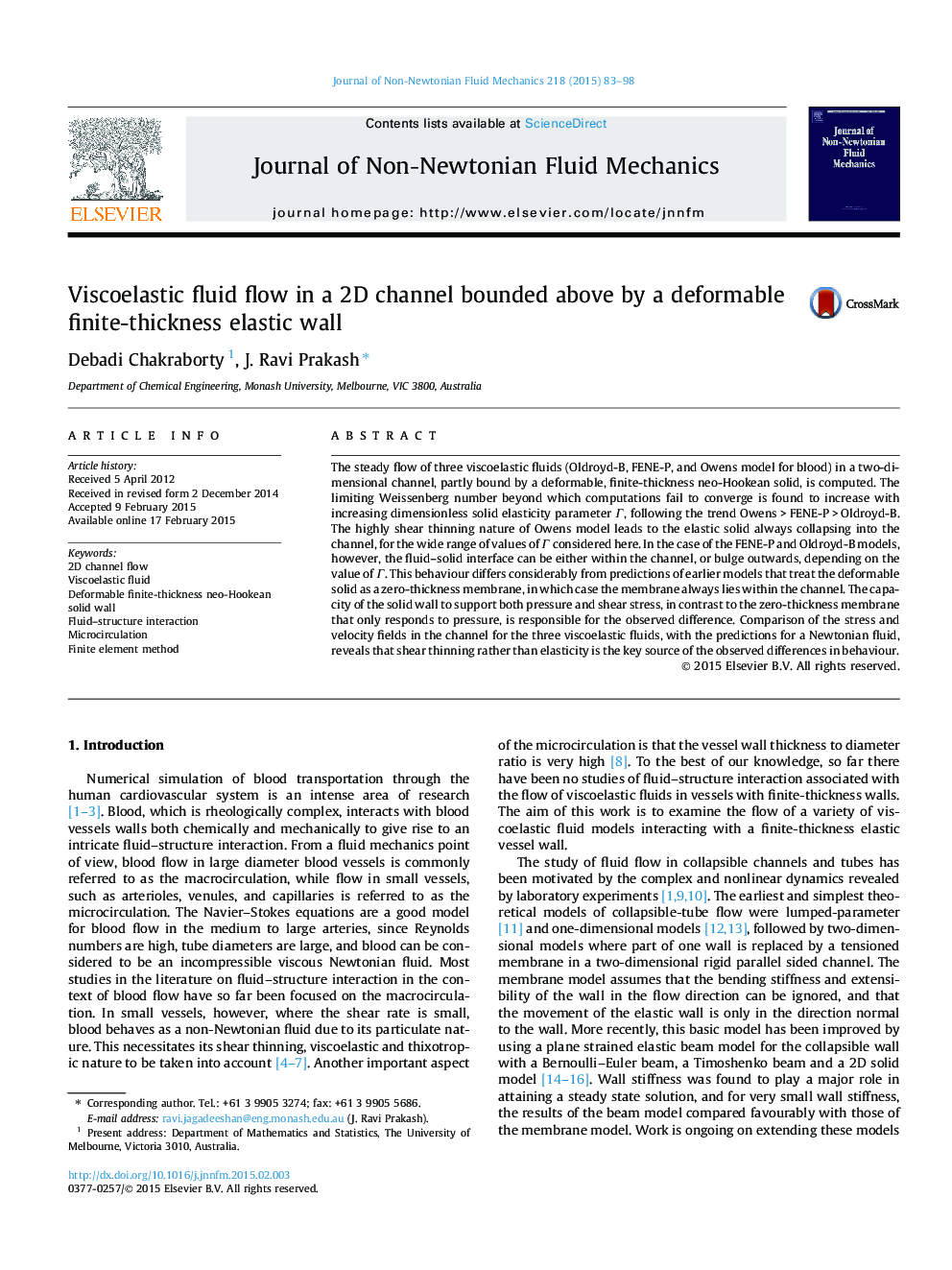| Article ID | Journal | Published Year | Pages | File Type |
|---|---|---|---|---|
| 670500 | Journal of Non-Newtonian Fluid Mechanics | 2015 | 16 Pages |
•Viscoelastic fluid flow in a two-dimensional channel is studied numerically.•A part of one of the channel walls is replaced by a finite-thickness elastic solid.•The shape of the fluid–solid interface is computed using finite-elements.•Three viscoelastic fluids are compared to a Newtonian fluid.•Differences in fluid rheology lead to significant differences in interface shape.
The steady flow of three viscoelastic fluids (Oldroyd-B, FENE-P, and Owens model for blood) in a two-dimensional channel, partly bound by a deformable, finite-thickness neo-Hookean solid, is computed. The limiting Weissenberg number beyond which computations fail to converge is found to increase with increasing dimensionless solid elasticity parameter ΓΓ, following the trend Owens > FENE-P > Oldroyd-B. The highly shear thinning nature of Owens model leads to the elastic solid always collapsing into the channel, for the wide range of values of ΓΓ considered here. In the case of the FENE-P and Oldroyd-B models, however, the fluid–solid interface can be either within the channel, or bulge outwards, depending on the value of ΓΓ. This behaviour differs considerably from predictions of earlier models that treat the deformable solid as a zero-thickness membrane, in which case the membrane always lies within the channel. The capacity of the solid wall to support both pressure and shear stress, in contrast to the zero-thickness membrane that only responds to pressure, is responsible for the observed difference. Comparison of the stress and velocity fields in the channel for the three viscoelastic fluids, with the predictions for a Newtonian fluid, reveals that shear thinning rather than elasticity is the key source of the observed differences in behaviour.
